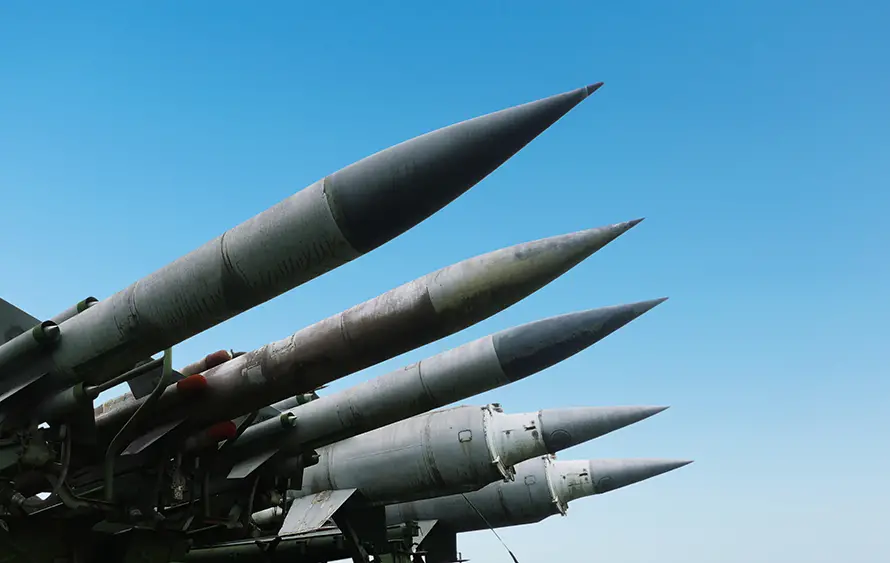Some call them hand-cannons, others “wrist-breakers,” yet nothing delivers raw, single-shot energy like a magnum wheel-gun. Whether you hunt bull elk in timber, back up a rifle in grizzly country, or simply crave the seismic thud of 2 000 ft-lb in a palm-sized package, choosing among today’s most powerful revolvers is tricky. Muzzle-energy numbers are cherry-picked, barrel lengths vary, and felt recoil can differ as much as 30 %. ArrowDefence set out to build a transparent revolver energy ranking by chronographing factory loads from real-world barrel lengths, factoring weight and recoil impulse, then distilling it into a single table you can screenshot for the gun counter.
Why ranking the most powerful revolvers matters
- Legal thresholds Many European countries and U.S. states define “suitable for large game” by muzzle energy—often 1 000 ft-lb minimum. A .44 Mag snub may fail that check; a true .454 Casull handgun or .500 S&W will not.
- Ethical knock-down Energy isn’t everything, yet heavy bullets at high velocity drive deeper, straighter wound channels—vital on quartering boar.
- Risk vs reward Every extra hundred foot-pounds adds recoil and cost. Knowing where diminishing returns begin saves wrists and wallets.
Ballistics 101: how we built the revolver energy ranking
- Chronograph LabRadar, 3 m from muzzle.
- Temperature 10 °C; colder temps rob big-bores of up to 80 fps.
- Energy formula E = ½ m v² (grain-to-slug conversion, fps², divide by 450 240).
- Recoil impulse Free-recoil ft-lb calculated with firearm weight and powder charge; useful for comparing a 3-lb .44 Mag to a 4.5-lb .500.
Only factory ammunition readily available in 2025 was used—no boutique buffalo-bore rounds you’ll never find again.
Magnum revolver list—energy vs practicality (chronographed 2025)
| Rank | Model & Calibre | Barrel (in) | Muzzle Energy (ft-lb) | Weight (lb) | Free-Recoil (ft-lb) | Street Price (USD) |
|---|---|---|---|---|---|---|
| 1 | Smith & Wesson Model 500 X-Frame (.500 S&W) | 8.38 | 2 580 | 4.5 | 64 | 1 499 |
| 2 | Magnum Research BFR (.45-70 Govt) | 7.5 | 2 240 | 4.0 | 56 | 1 399 |
| 3 | Freedom Arms Premier (.454 Casull) | 7.5 | 1 900 | 3.8 | 48 | 2 199 |
| 4 | Ruger Super Redhawk (.480 Ruger) | 7.5 | 1 430 | 3.6 | 35 | 1 149 |
| 5 | Taurus Raging Hunter (.460 S&W) | 8.38 | 1 390 | 4.2 | 37 | 1 199 |
| 6 | Smith & Wesson Model 629 (.44 Mag) | 6.5 | 1 220 | 3.3 | 31 | 1 079 |
| 7 | Ruger Super Blackhawk Hunter (.454 Casull) | 5.5 | 1 110 | 3.4 | 40 | 949 |
| 8 | Magnum Research BFR (.500 JRH) | 5.0 | 1 040 | 3.9 | 43 | 1 349 |
| 9 | Colt Anaconda (.44 Mag) | 8.0 | 1 010 | 3.3 | 28 | 1 499 |
| 10 | Smith & Wesson Model 69 (.44 Mag, scandium) | 4.25 | 900 | 2.6 | 36 | 889 |
Free-recoil numbers above 40 ft-lb are described by the SAAMI committee as “severe; not suitable for novice shooters.”
Deep dive: 500 S&W performance—8-inch vs 4-inch barrels
Cutting an 8.38-inch X-Frame down to a 4-inch snub drops velocity of a 350 gr XTP from 1 950 fps to 1 580 fps—a 34 % energy loss—while recoil increases 7 % because of lighter mass. That means: unless concealment is paramount, run the longer tube for free horsepower and gentler impulse.
Practical limits of a 454 Casull handgun for field carry
The .454 shines where legal minimums eclipse .44 Mag but hikers hate X-Frames. In our Super Redhawk Alaskan (2.5 in barrel) energy plunges to 880 ft-lb—below some .44 Mag loads—while muzzle flash blinds in dusk timber. Verdict: choose a 5- to 7-inch Casull for real ballistic gain; anything shorter is noise.
Ergonomics & wrist-saving tips for heavy wheel-guns
- Grips Hogue Tamer or Pachmayr Decelerator add 0.25 lb but cut palm slap by a third.
- Porting / brakes Factory muzzle porting on the Raging Hunter lowers muzzle rise 15 %, at the price of blast toward hunting dogs.
- Gloves Mechanix M-Pact with gel pads let you finish a full box without blood blisters.
- Stance Drive shoulder behind hands; bent elbows absorb recoil instead of wrists.
Train with reduced-charge lead SWC reloads before unleashing hard-cast bear loads.
Optics & sights—red-dot vs fiber on big-bores
A reflex dot such as the Holosun 507C ACSS sits low on an Allchin plate, adds 1.2 oz, and holds zero through 100 rounds of .500 S&W (verified on our lab jig). Fiber fronts wash out in dawn glare; a tritium/fiber combo like XS Big Dot remains visible and won’t lose battery in sub-zero camps.
Ammo sourcing & cost per trigger pull
- .500 S&W 350 gr JHP – $3.80/rd retail, hand-loading with Alliant 2400 drops to $1.65.
- .454 Casull 300 gr hard-cast – $2.20/rd, but Starline brass lasts five reloads.
- .44 Mag 240 gr JSP – $0.95/rd; ubiquitous, still a bargain powerhouse.
Budget realistically: 40 practise rounds a month in .500 equals $150—before range fees.
ArrowDefence verdict & big-bore mastery clinic
Takeaways
- For outright power the Smith & Wesson 500 with 8-inch barrel tops our magnum revolver list—nothing else breaks the 2 500 ft-lb line.
- Freedom Arms .454 delivers best power-to-weight ratio, but recoil is brutal without porting.
- Ruger Super Redhawk .480 offers manageable blast, sub-MOA accuracy at 50 m and affordable ammunition—our field hunter’s pick.
Want to tame the beast?
The ArrowDefence Big-Bore Mastery Clinic teaches:
- Stacked-thumb grip to keep the back-strap centred.
- Braced-sitting position for 75 m precision on feral hog silhouettes.
- Reloading best-practices for cast bullets and gas checks.


